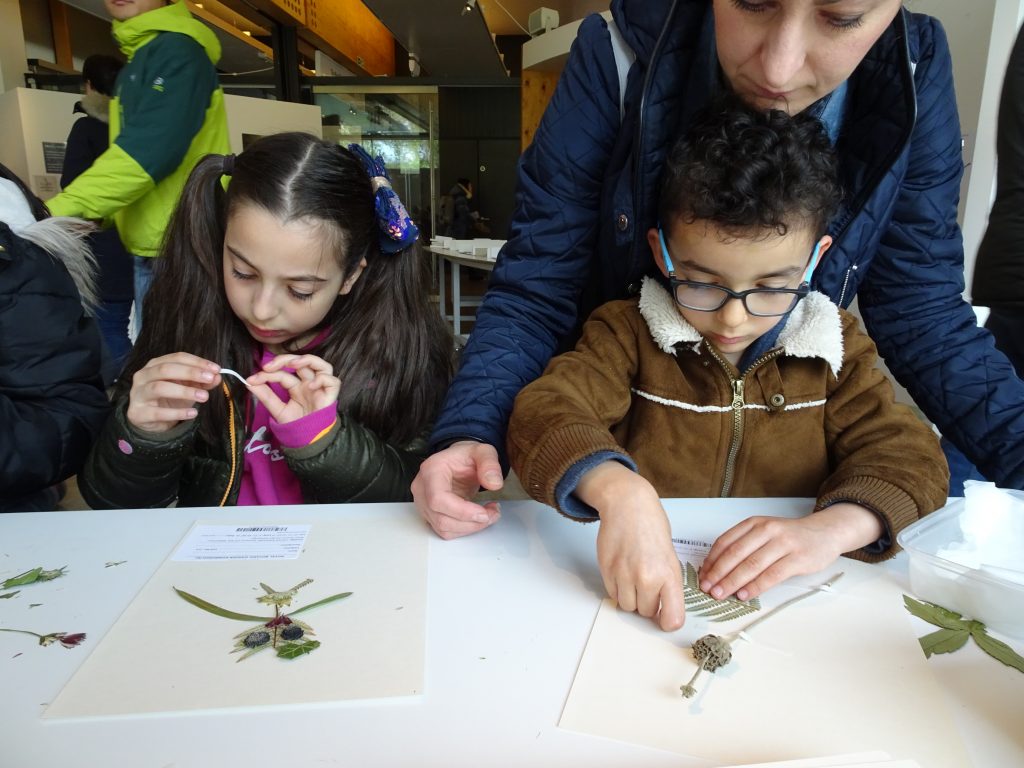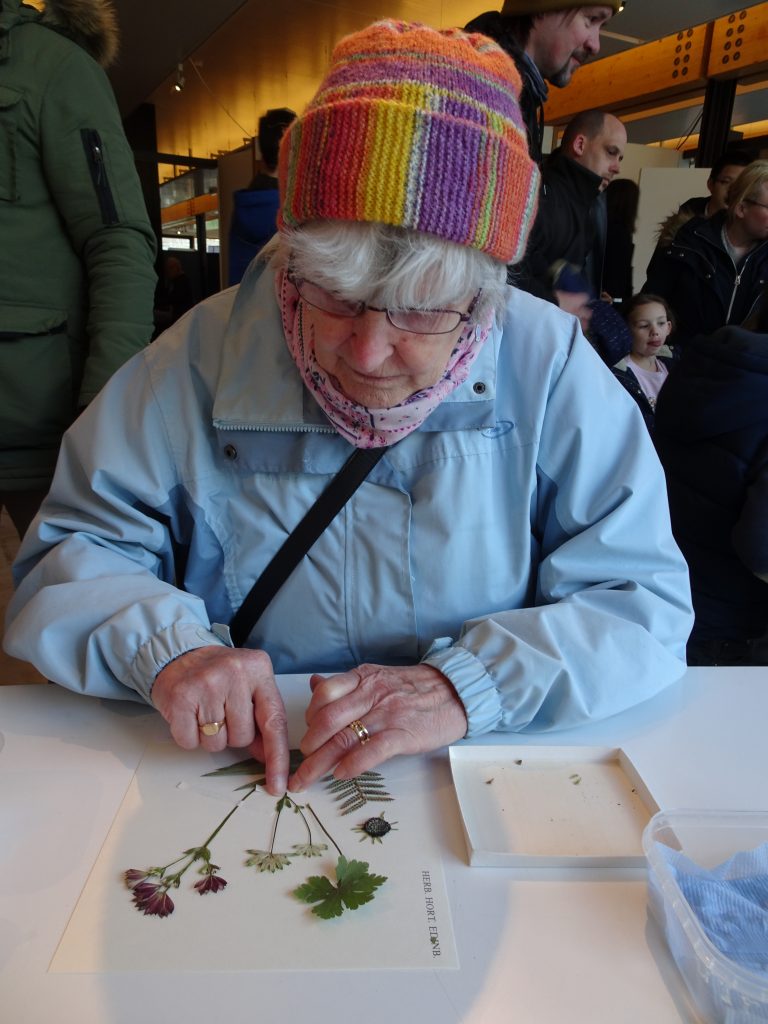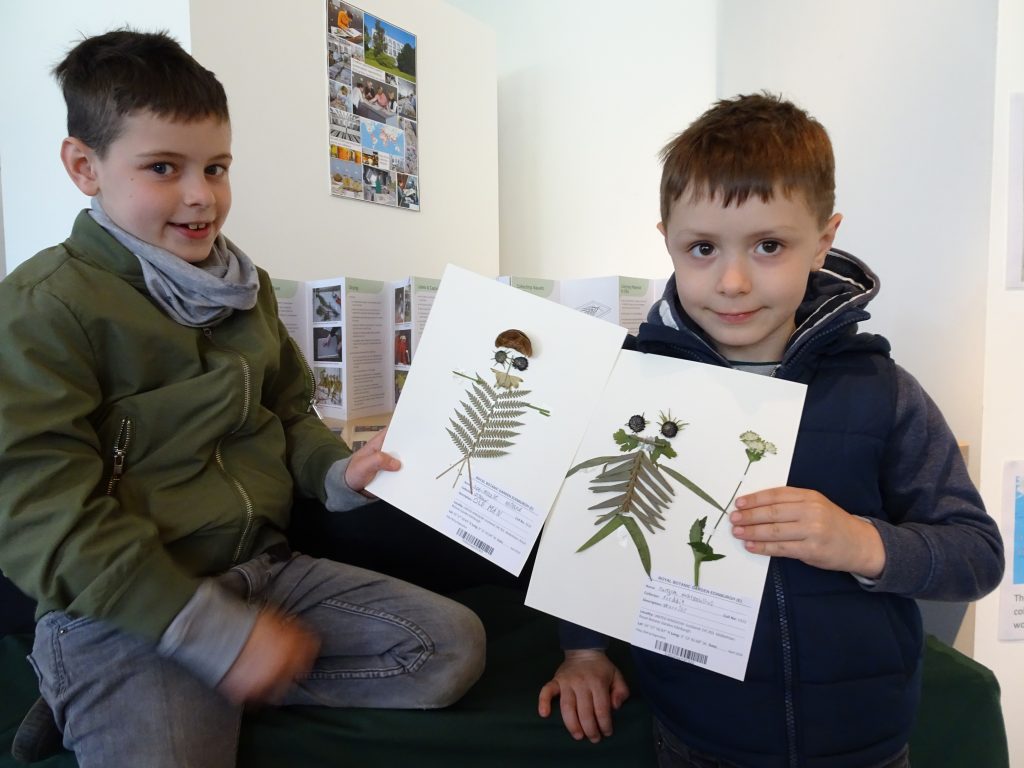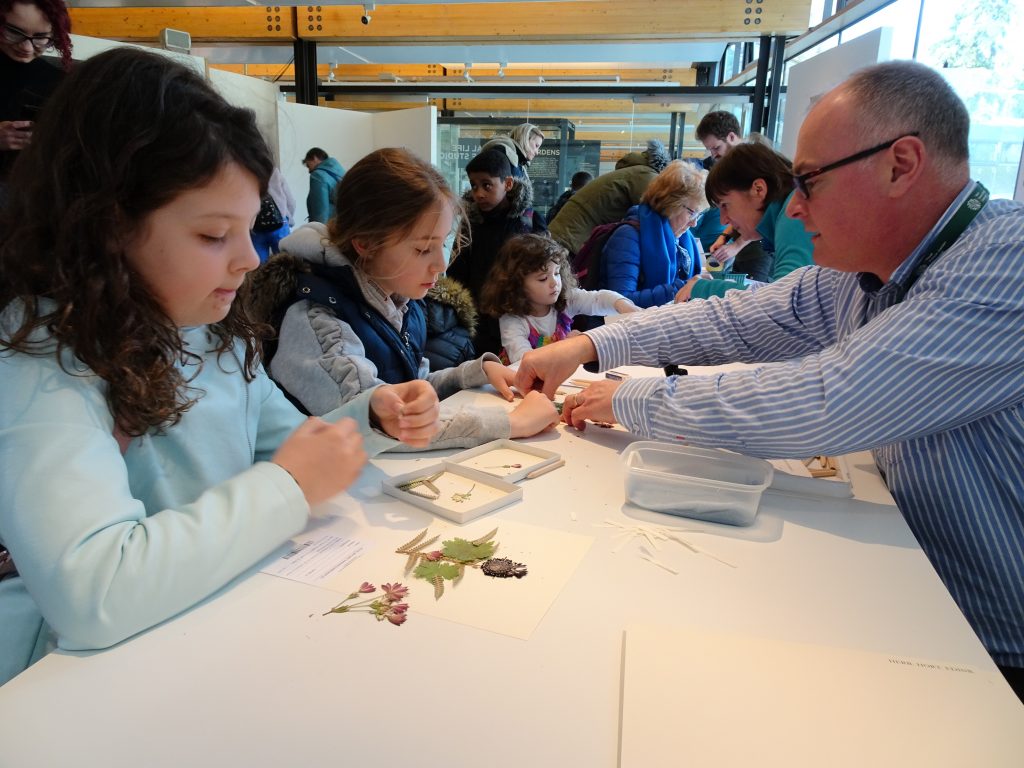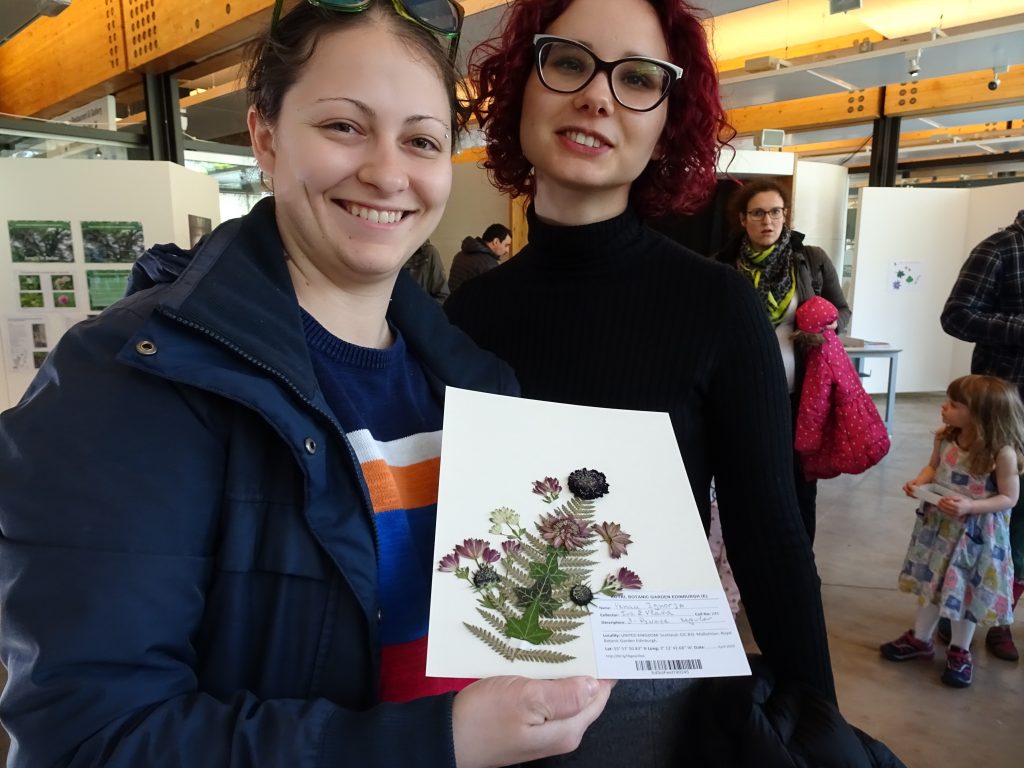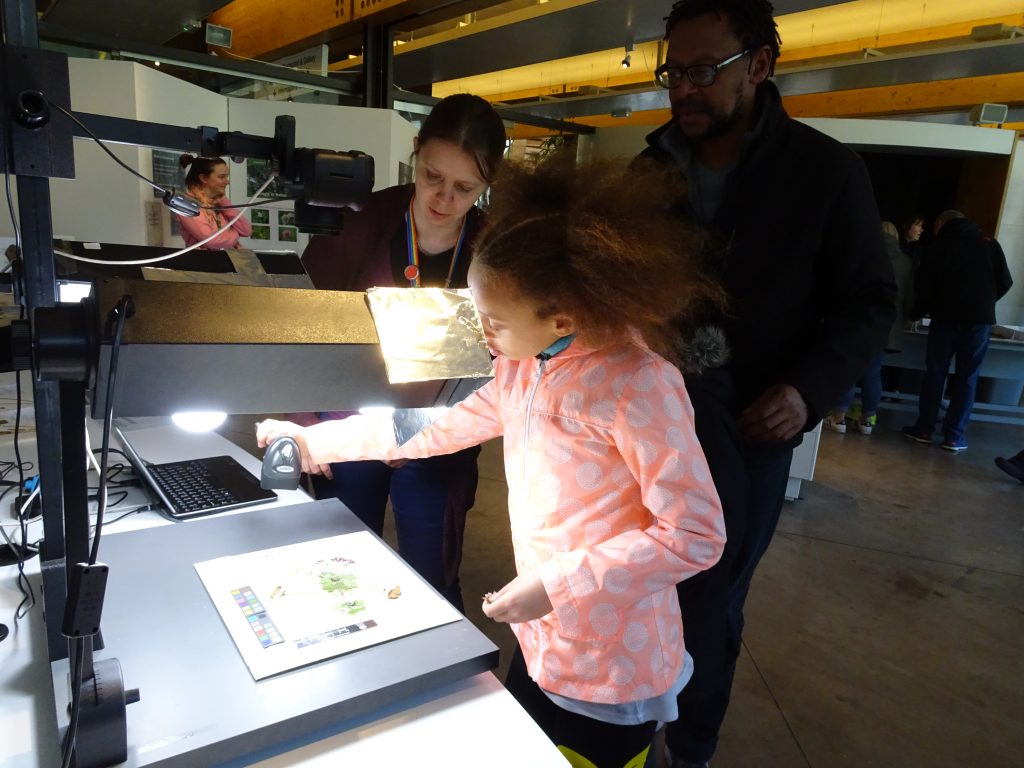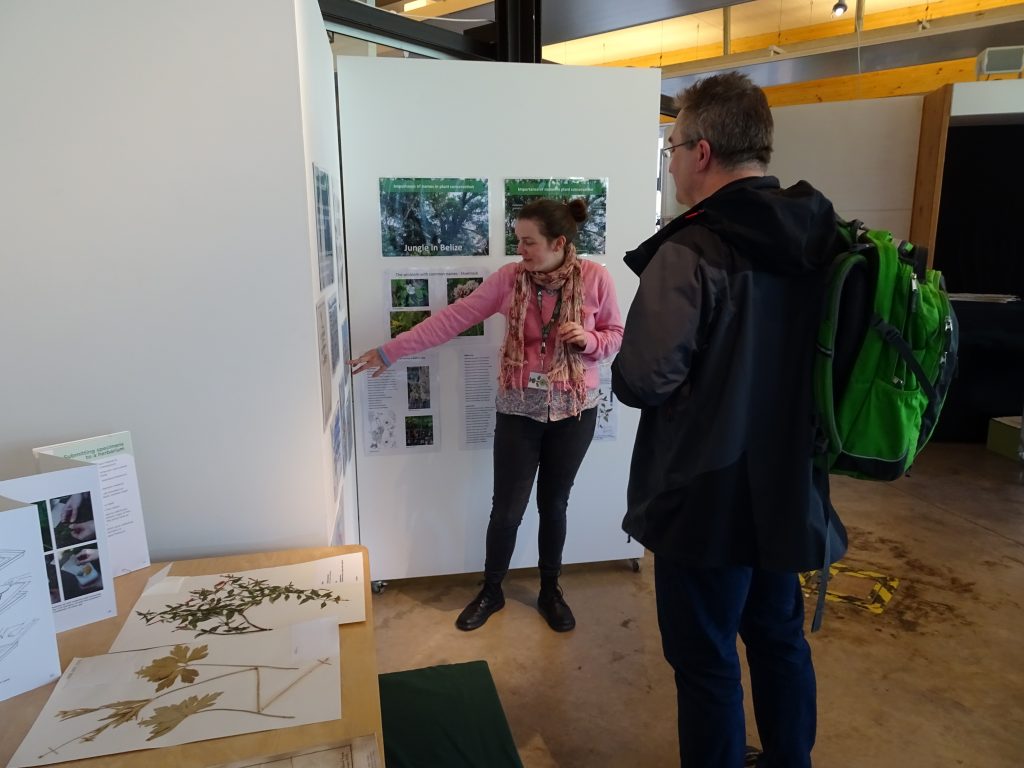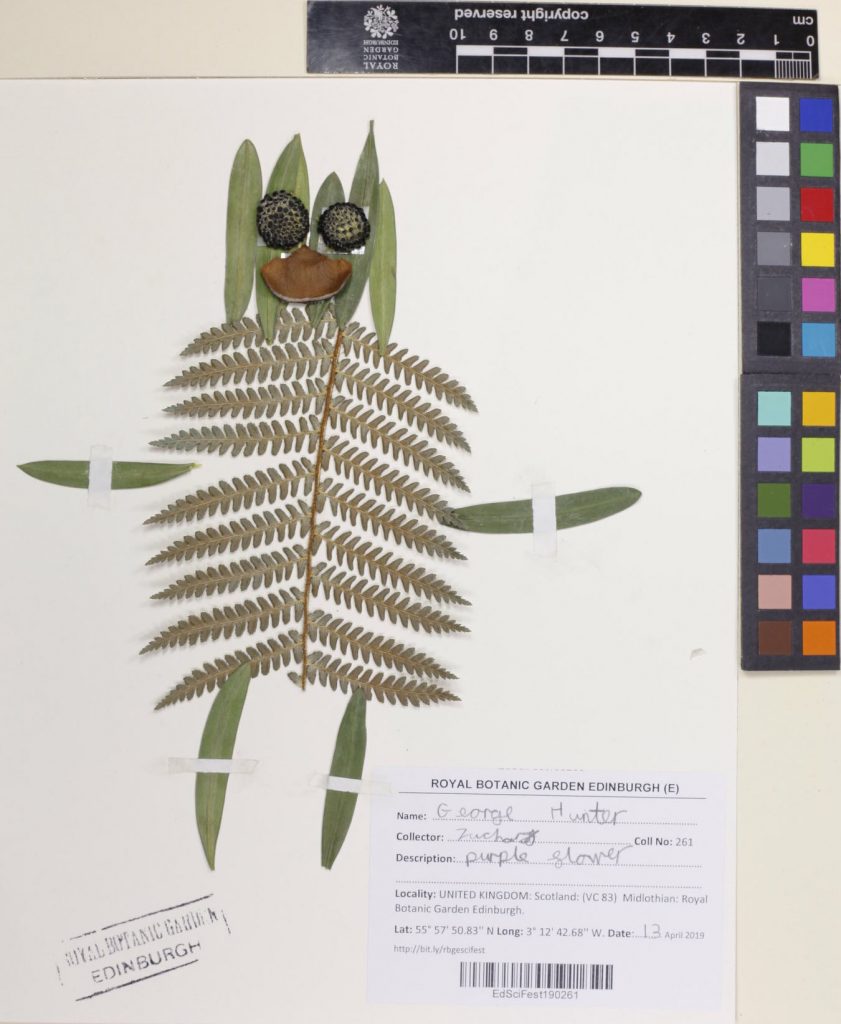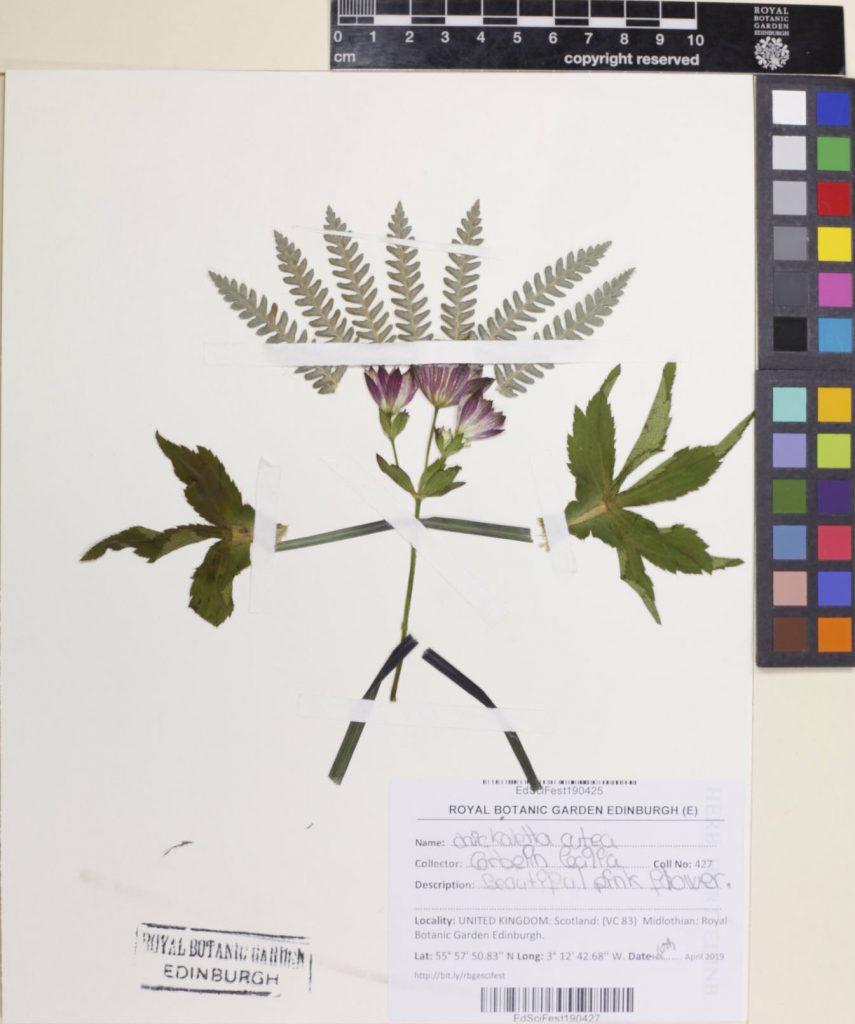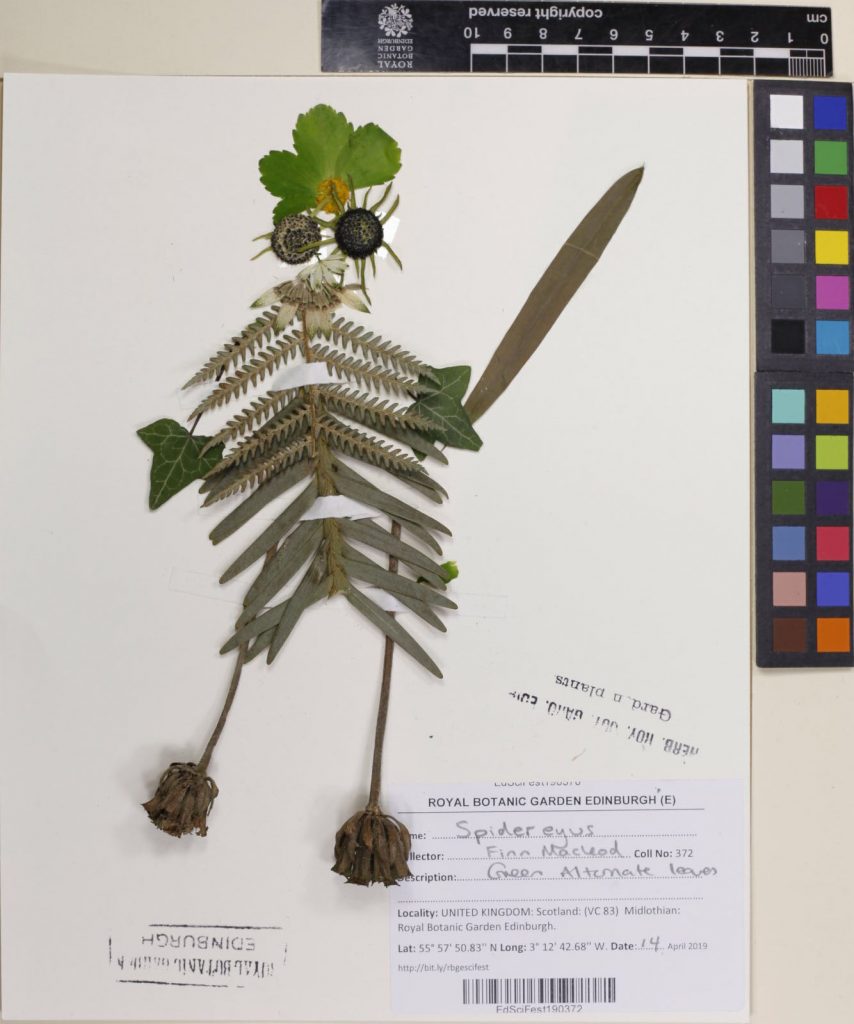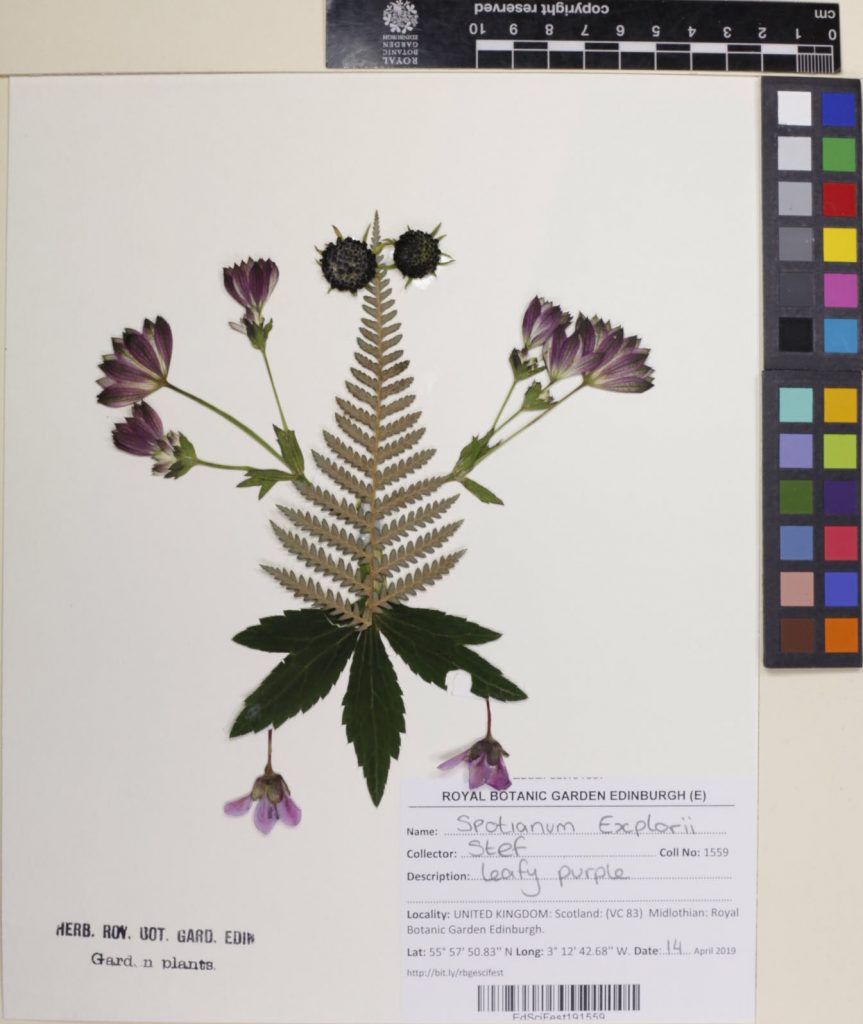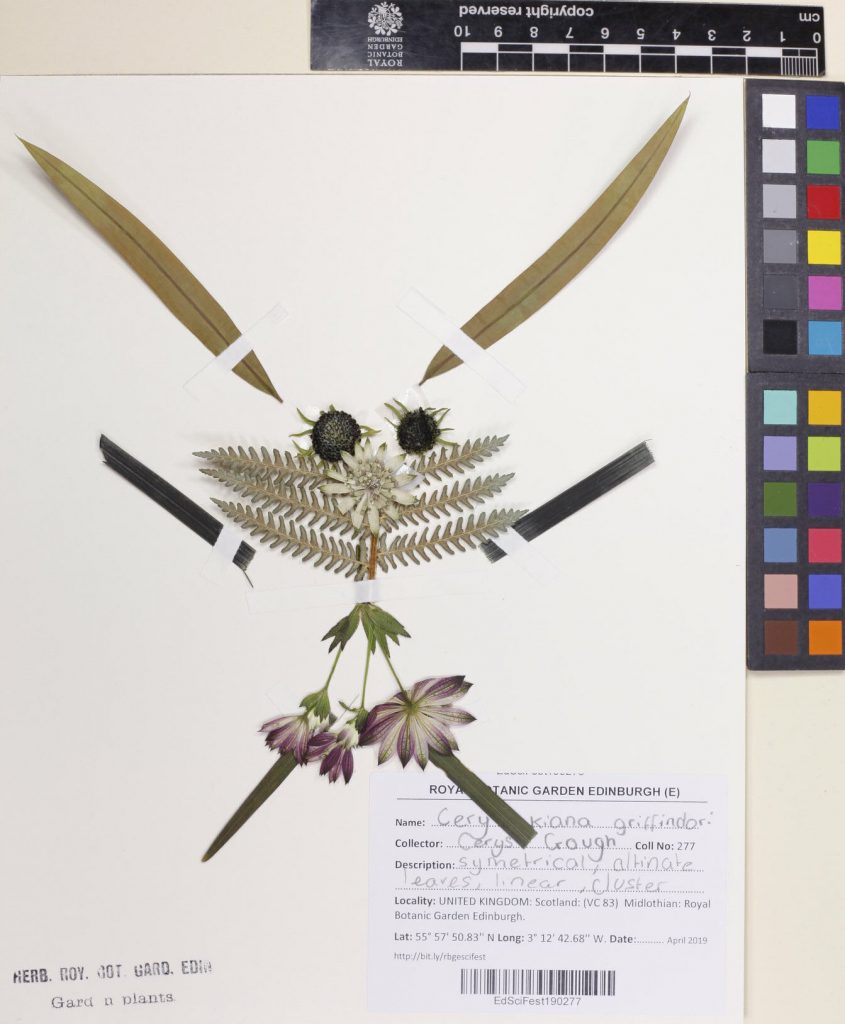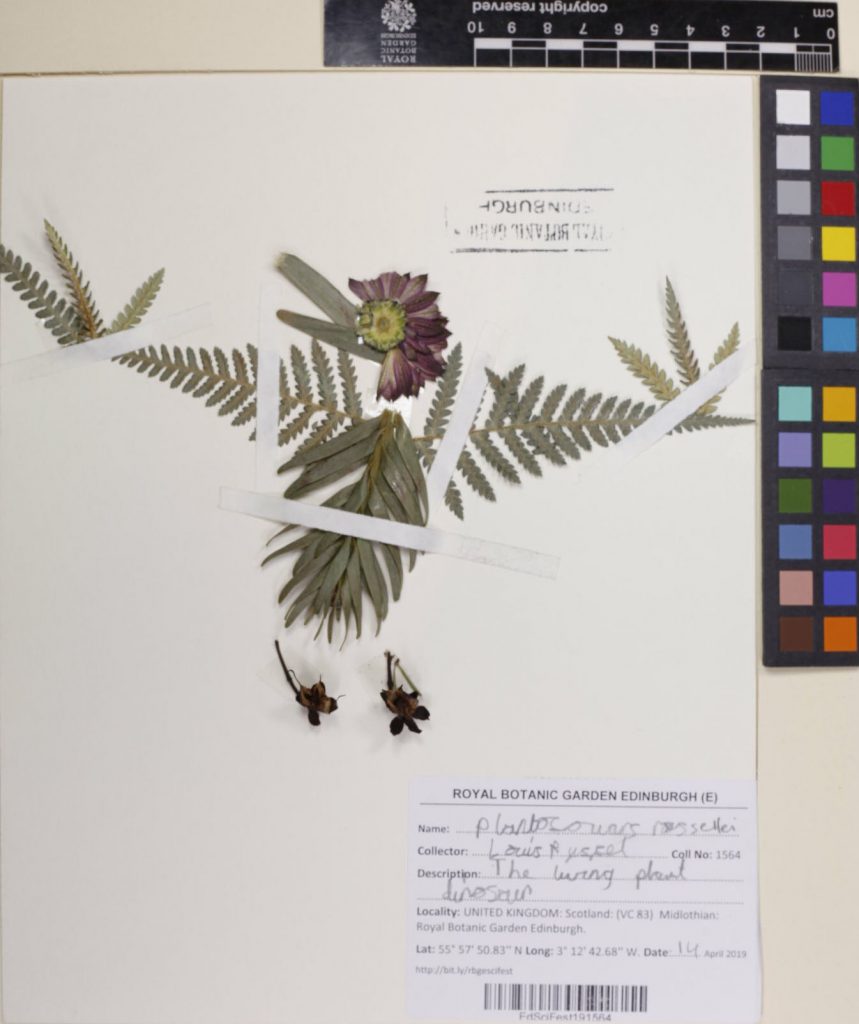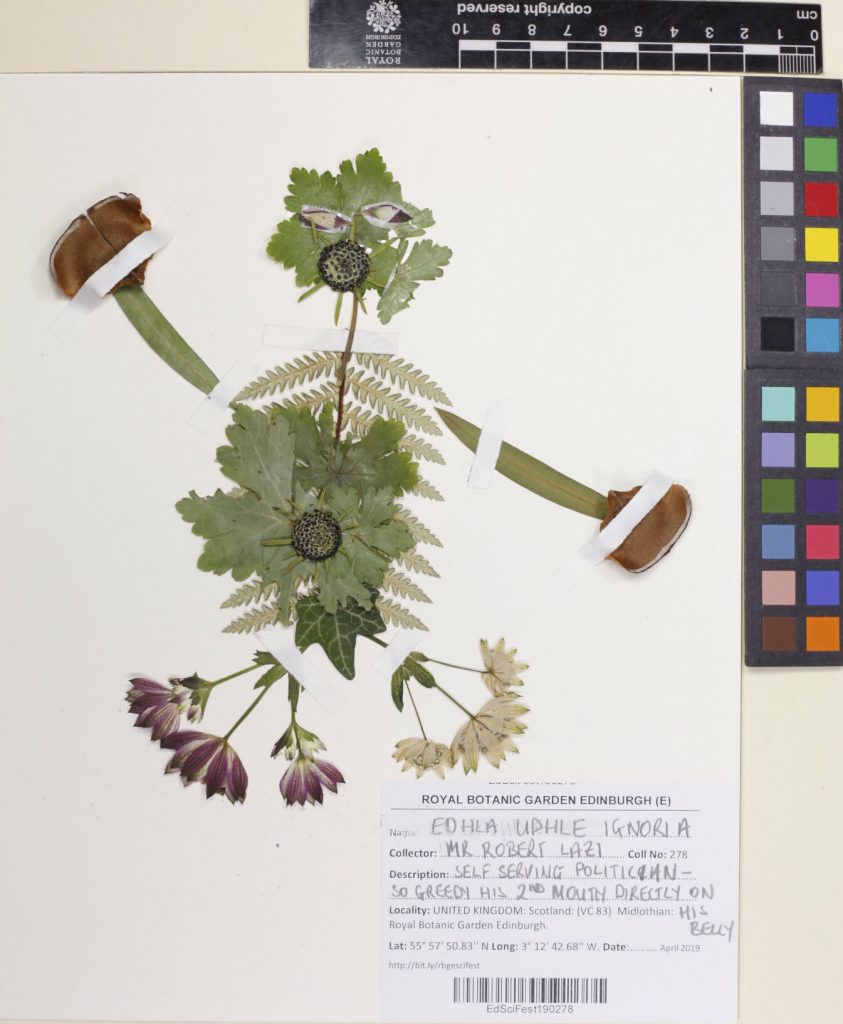This year for the first time, the herbarium team ran Frankenstein’s Plants, an event for the Edinburgh Science Festival. Participants were able to build their very own unique herbarium specimen using a range of pressed and dried flowers, leaves and fruits that had been bought in or collected from the gardens here at Edinburgh.
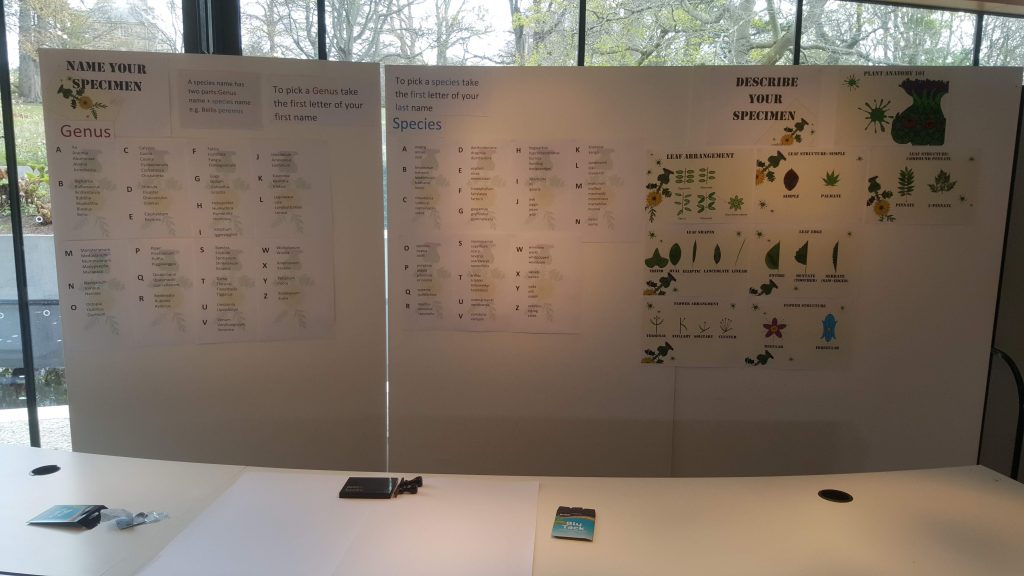
Naming and Description 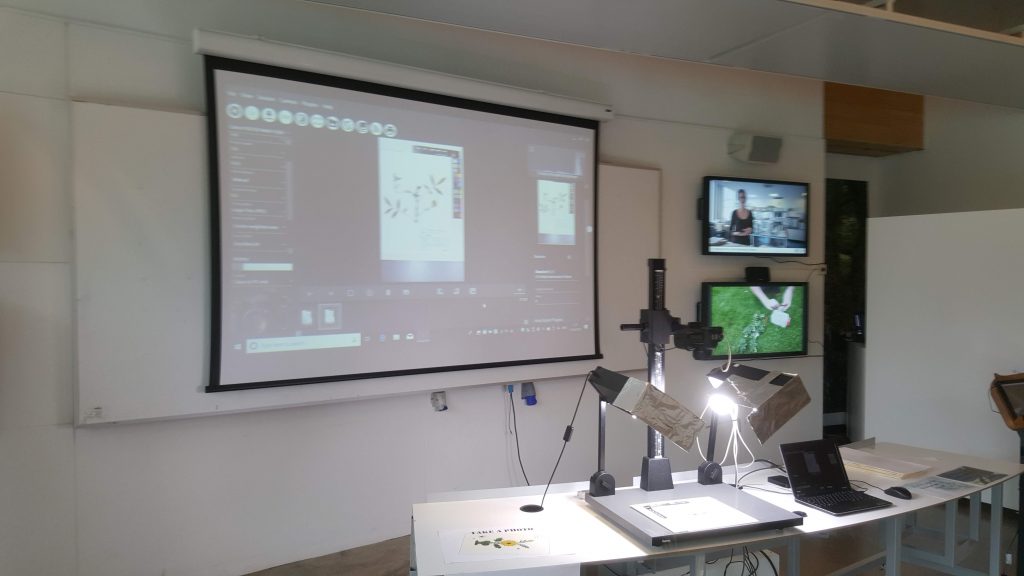
Digitisation station 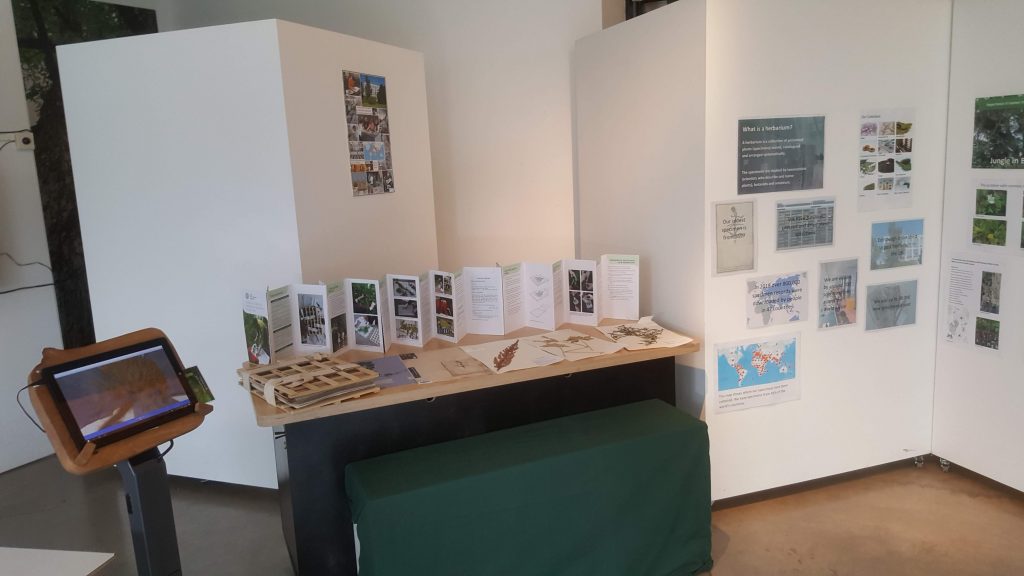
Information about the Herbarium and its collections 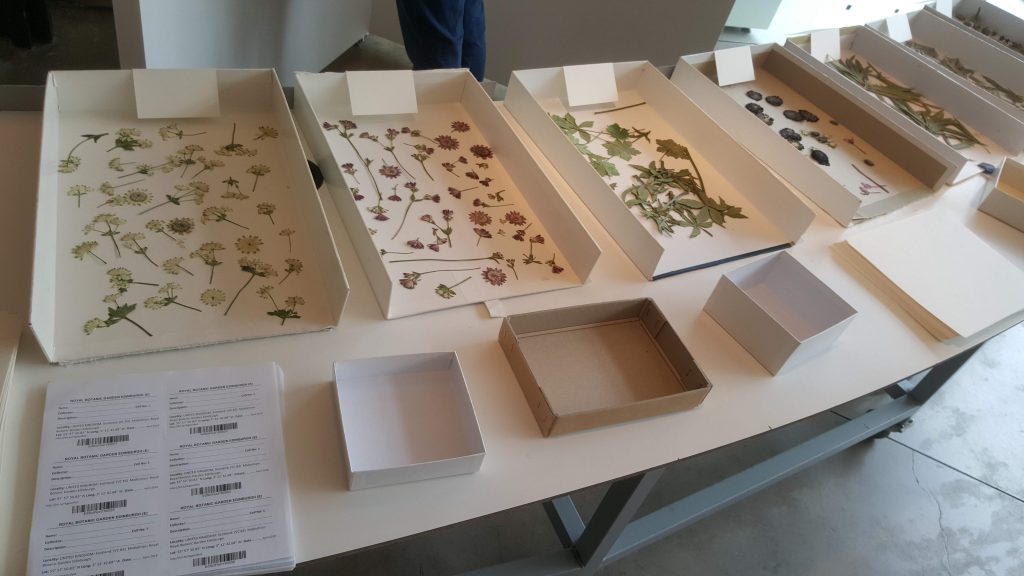
Material for specimens
Each ‘collector’ mounted their specimen on a herbarium sheet using archival gummed tape. Collection information was added by the collector to a pre-printed label including: the collector’s name, the date, a description and species name. Names were created from a list of real and imagined genera and species epithets that were either picked based on the person’s first and second initial, or simply because they liked a particular combination! A description of their ‘specimen’ was added using some basic descriptive terms for leaves, leaf margins and flower types. Once the ‘specimen’ had been prepared it was imaged so that it could be added to the virtual herbarium.
From previous Science Festival events run by the RBGE and the child focused concurrent event run by the RBGE (an Easter trail) we knew that the main “audience/participants ” would be young children from 3- 13 with their parents. In fact this proved to be mainly but not exclusively correct, as there were plenty of older participants and lots of parental engagement.
Our primary engagement aim was to show that science is fun. Our secondary engagement aims were:
- Specimens are made by attaching dried plants to card
- The RBGE has a herbarium, in which scientists work with plants
- Botanical names come in 2 parts genus & species
- We digitise our collections
The processes used for the creation of Frankenstein’s specimens are very similar to those employed by the staff here at RBGE, from creating a description in the field and giving a species name, to mounting and imaging the specimen in the herbarium.
Altogether 333 ‘herbarium specimens’ were added to the virtual herbarium, with ‘collectors’ ranging from 3-95 in age.
Participants were really enthused by the event and even got competitive at times! Feedback gathered during the event was very positive:
“Very informative and great learning venue for the kids.”
“A lovely way to engage children with botany. Both my young sons were very interested.”
“Good because the materials are beautiful. Helpful people.”
“Really inclusive, differentiated activity for all ages – creative and practical.”
Most importantly fun was had by all involved whilst raising awareness of the research collections in the herbarium.

